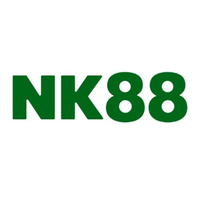- Home
- Login
Recent Posts
-
 • read more
• read moreFacility Management Software is designed to help organizations efficiently manage buildings, assets, and daily operations from a centralized platform. It enables teams to automate maintenance activities, track assets in real time, manage work orders, and schedule preventive maintenance to reduce downtime and operational costs. With integrated tools for space management, inventory control, vendor coordination, and compliance tracking, the software ensures smooth and uninterrupted facility operations.
By providing real-time data and performance insights, Facility Management Software supports informed decision-making and improves resource utilization. It enhances productivity, extends asset lifespan, and ensures safety and regulatory compliance across facilities. Suitable for industries such as manufacturing, healthcare, IT, hospitality, education, and commercial real estate, the solution simplifies complex facility workflows and helps organizations achieve operational efficiency, sustainability, and long-term cost control.
-
M• read more
After got fed up from the daily routine boring life, every person needs to be refreshed Surat Call Girls is something good for you. Not all girls have this quality to understand the individual and offer them the best, but hopefully, our agency girls are highly efficient in doing so. They had mastered the art of satisfaction. Once you book our Model, we show you real pictures, and we do not deceive you like others by showing fake stuff because we have faith in our girls. You surely like their beauty and going to experience the ride of fantasy like never before. Our girls have too many qualities for every type of individual, either its skills, if intimation or beauty. We promise that you are not going to regret your decision of choosing these angles of night. So now, do not waste your precious time; it is safe and secure.
 https://www.hotsuratescort.com/
https://www.hotsuratescort.com/
https://www.hotsuratescort.com/ahmedabad-escorts.html
https://www.hotsuratescort.com/amritsar-escorts.html
https://www.hotsuratescort.com/anand-escorts.html
https://www.hotsuratescort.com/anjar-escorts.html
https://www.hotsuratescort.com/ankleshwar-escorts.html
https://www.hotsuratescort.com/bagodara-escorts.html
https://www.hotsuratescort.com/bhachau-escorts.html
https://www.hotsuratescort.com/bharuch-escorts.html
https://www.hotsuratescort.com/bhavnagar-escorts.html
https://www.hotsuratescort.com/bhuj-escorts.html
https://www.hotsuratescort.com/botad-escorts.html
https://www.hotsuratescort.com/chandigarh-escorts.html
https://www.hotsuratescort.com/chhota-udaipur-escorts.html
https://www.hotsuratescort.com/dahod-escorts.html
https://www.hotsuratescort.com/dakor-escorts.html
https://www.hotsuratescort.com/daman-escorts.html
https://www.hotsuratescort.com/dehgam-escorts.html
https://www.hotsuratescort.com/dehradun-escorts.html
https://www.hotsuratescort.com/disha-escorts.html
https://www.hotsuratescort.com/diu-escorts-girls.html
https://www.hotsuratescort.com/gandhidham-escorts.html
https://www.hotsuratescort.com/gandhinagar-escorts.html
https://www.hotsuratescort.com/ghaziabad-escorts.html
https://www.hotsuratescort.com/godhra-escorts.html
https://www.hotsuratescort.com/halol-escorts.html
https://www.hotsuratescort.com/himmatnagar-escorts.html
https://www.hotsuratescort.com/jalandhar-escorts.html
https://www.hotsuratescort.com/jamnagar-escorts.html
https://www.hotsuratescort.com/junagadh-escorts.html
https://www.hotsuratescort.com/kalol-escorts.html
https://www.hotsuratescort.com/kandla-escorts.html
https://www.hotsuratescort.com/kutch-escorts.html
https://www.hotsuratescort.com/lucknow-escorts.html
https://www.hotsuratescort.com/mahudha-escorts.html
https://www.hotsuratescort.com/manali-escorts.html
https://www.hotsuratescort.com/maninagar-escorts.html
https://www.hotsuratescort.com/meerut-escorts.html
https://www.hotsuratescort.com/mehsana-escorts.html
https://www.hotsuratescort.com/modasa-escorts.html
https://www.hotsuratescort.com/mohali-escorts.html
https://www.hotsuratescort.com/morbi-escorts.html
https://www.hotsuratescort.com/mount-abu-escorts.html
https://www.hotsuratescort.com/mundra-escorts.html
https://www.hotsuratescort.com/nadiad-escorts.html
https://www.hotsuratescort.com/navsari-escorts.html
https://www.hotsuratescort.com/noida-escorts.html
https://www.hotsuratescort.com/palanpur-escorts.html
https://www.hotsuratescort.com/panchmahal-escorts.html
https://www.hotsuratescort.com/patan-escorts.html
https://www.hotsuratescort.com/porbandar-escorts.html
https://www.hotsuratescort.com/pushkar-escorts.html
https://www.hotsuratescort.com/rajkot-escorts.html
https://www.hotsuratescort.com/sabarmati-escorts.html
https://www.hotsuratescort.com/sanand-escorts.html
https://www.hotsuratescort.com/saputara-escorts.html
https://www.hotsuratescort.com/shimla-escorts.html
https://www.hotsuratescort.com/sirohi-escorts.html
https://www.hotsuratescort.com/somnath-escorts.html
https://www.hotsuratescort.com/surat-escorts.html
https://www.hotsuratescort.com/vadodara-escorts.html
https://www.hotsuratescort.com/vapi-escorts.html -
S• read more
Mumbai Escorts
Mira Road Escorts
Udaipur Escorts
Rajkot Escorts
Bhubaneswar Escorts
Andheri Escorts
Ahmedabad Escorts
Nariman Point Escorts
Bandra Escorts
Airoli Escorts
Ambernath Escorts
Badlapur Escorts
Belapur Escorts
Bhandup Escorts
Bhayandar Escorts
Borivali Escorts
Chembur Escorts
Colaba Escorts
Cotton Green Escorts
Dadar Escorts
Dahisar Escorts
Diva Escorts
Dombivali Escorts
Ghansoli Escorts
Goddbonder Road Escorts
Goregaon Escorts
Govandi Escorts
Gtb Nagar Escorts
Indore Escorts
Juhu Escorts
Kalamboli Escorts
Kalwa Escorts
Kalyan Escorts
Kashimira Escorts
Kopar Khairane Escorts
Kurla Escorts
Lokhandwala Escorts
Malad Escorts
Mankhurd Escorts
Masjid Bunder Escorts
Mulund Escorts
Mumbra Escorts
Nahur Escorts
Navi Mumbai Escorts
Nerul Escorts
Panve Escortsl Escorts
Powai Escorts
Rabale Escorts
Sanpada Escorts
Santa Cruz Escorts
Seawood Escorts
Taloja Escorts
Thane Escorts
Tilak Nagar Escorts
Turbhe Escorts
Ulhasnagar Escorts
Vartak Nagar Escorts
Vashi Escorts
Vikhroli Escorts
Vile Parle Escorts
Wadala Road Escorts
Bangalore Escorts
Delhi Escorts
Gurgaon Escorts
Hyderabad Escorts
Jaipur Escorts
Kolkata Escorts
Lucknow Escorts
Noida Escorts
Patna Escorts
Pune Escorts
Ranchi Escorts
Surat Escorts
Bhopal Escorts
Ghaziabad Escorts
Allahabad Escorts
Mumbai Escorts
Mount Abu Escorts
Indore Escorts
Udaipur Escorts
Mumbai Call Girls
Mumbai Call Girls
Call Girls in Mumbai
Pune Escorts
Hyderabad Escorts
Andheri Escorts
Andheri Escorts
Chennai Escorts
Mumbai Escorts
Jalandha Escorts
Jamshedpur Escorts
Varanasi Escorts
Rishikesh Escorts
Zirakpur Escorts
Vadodara Escorts
Mount Abu Escorts
Ajmer Escorts
Dehradun Escorts
Manali Escorts
Jammu Escorts
Haridwar Escorts
Kochi Escorts
Vijayawada Escorts
Visakhapatnam Escorts
Mathura Escorts
Raipur Escorts
Daman Escorts
Shimla Escorts
Agra Escorts
Indore Escorts
Indore Escorts
Chennai Escorts
Indore Escorts
Ujjain Escorts
Badnawar Escorts
Badnagar Escorts
Shajapur Escorts
Dewas Escorts
Nagda Escorts
Ratlam Escorts
Sillod Escorts
Jalgaon Escorts
Bhusawal Escorts
Amalner Escorts
Ahmednagar Escorts
Dhule Escorts
Jalna Escorts
Udaipur Escorts
Kutch Escorts
Somnath Escorts
Porbandar Escorts
Aurangabad Escorts
Sabarmati Escorts
Cg Road Escorts
Vastrapur Escorts
Naroda Escorts
Narol Escorts
Sg Highway Escorts
Gota Escorts
Chandkheda Escorts
Ambawadi Escorts
Asarwa Escorts
Ashram Road Escorts
Satellite Escorts
Sarkhej Escorts
Paldi Escorts
Sola Escorts
Ranip Escorts
Shahpur Escorts
Thaltej Escorts
Vasna Escorts
Maninagar Escorts
Chopda EscortsChennai Escorts
Jalandhar Escorts
Jammu Escorts
Jhansi Escorts
Karnal Escorts
Kota Escorts
Kullu Escorts
Laddakh Escorts
Leh Escorts
Manipur Escorts
Meerut Escorts
Meghalaya Escorts
Mount Abu Escorts
Muzaffarnagar Escorts
Mysore Escorts
Nagpur Escorts
Nainital Escorts
Nashik Escorts
Navi Mumbai Escorts
Ooty Escorts
Pathankot Escorts
Pondicherry Escorts
Shimla Escorts
Sikkim Escorts
Siliguri Escorts
Champaner Escorts
Veraval Escorts
Surat Escorts
Vadodara Escorts
Ahmedabad Escorts
Agra Escorts
Dehradun Escorts
Gurgaon Escorts
Hyderabad Escorts
Jaipur Escorts
Jodhpur Escorts
Kanpur Escorts
Kolkata Escorts
Lucknow Escorts
Goa Escorts
Mumbai Escorts
Mussoorie Escorts
Raipur Escorts
Delhi Escorts
Ranchi Escorts
Rishikesh Escorts
Ajmer Escorts
Allahabad Escorts
Almora Escorts
Alwar Escorts
Ambala Escorts
Amravati Escorts
Bareilly Escorts
Bathinda Escorts
Bhilai Escorts
Bhopal Escorts
Bbhubaneswar Escorts
Bikaner Escorts
Bilaspur Escorts
Coimbatore Escorts
Chandigarh Escorts
Daman Escorts
Darjeeling Escorts
Gangtok Escorts
Gorakhpur Escorts
Noida Escorts
Guwahati Escorts
Haldwani Escorts
Hapur Escorts
Imphal Escorts
Jabalpur Escorts
Jaisalmer Escorts
Anand Escorts
Gandhidham Escorts
Mehsana Escorts
Morbi Escorts
Palitana Escorts
Ambaji Escorts
Vapi Escorts
Ankleshwar Escorts
Adalaj Escorts
Dahod Escorts
Amreli Escorts
Dakor Escorts
Botad Escorts
Kandla Escorts
Diu Escorts
Mandvi Escorts
Anjar Escorts
Himmatnagar Escorts
Panchmahal Escorts
Sonipat Escorts
Srinagar Escorts
Tirupati Escorts
Tripura Escorts
Varanasi Escorts
Zirakpur Escorts
Kochi Escorts
Visakhapatnam Escorts
Airoli Escorts
Andheri Escorts
Bandra Escorts
Belapur Escorts
Borivali Escorts
Chembur Escorts
Colaba Escorts
Dadar Escorts
Dahisar Escorts
Dharavi Escorts
Ghatkopar Escorts
Goregaon Escorts
Grant Road Escorts
Gondal Escorts
Navsari Escorts
Palanpur Escorts
Valsad Escorts
Nadiad Escorts
Godhra Escorts
Saputara Escorts
Juhu Escorts
Kandivali Escorts
Khar Escorts
Kharghar Escorts
Kurla Escorts
Lokhandwala Escorts
Mahim Escorts
Malad Escorts
Marine Drive Escorts
Mira Road Escorts
Mulund Escorts
Nerulpanvel Escorts
Powai Escorts
Sakinaka Escorts
Santacruz Escorts
Seawood Escorts
Vasai Escorts
Vashi Escorts
Vileparle Escorts
Wadala Escorts
Worli Escorts
Rajkot Escorts
Junagadh Escorts
Jamnagar Escorts
Bhavnagar Escorts
Gandhinagar Escorts
Bhuj Escorts
Bharuch Escorts
Bangalore Escorts -
 • read more
• read moreNK88 tự hào mang đến trải nghiệm cá cược chuyên nghiệp, uy tín với nhiều năm hoạt động. Với các dịch vụ đa dạng như casino online, bắn cá, nổ hũ, đá gà và xổ số, nk88t3.com hứa hẹn đáp ứng mọi nhu cầu giải trí của người chơi.
Thông tin chi tiết:
Thương hiệu nhà cái: NK88
Website: https://nk88t3.com/
Địa chỉ: 42 P. Tân Khai, Vĩnh Hưng, Hai Bà Trưng, Hà Nội, Việt Nam
Email: nk88t3com@gmail.com
Phone: 0933610839
Hashtag: #nk88 #nk88cacuoc #nk88t3com #nhacaink88 #nk88trangchu